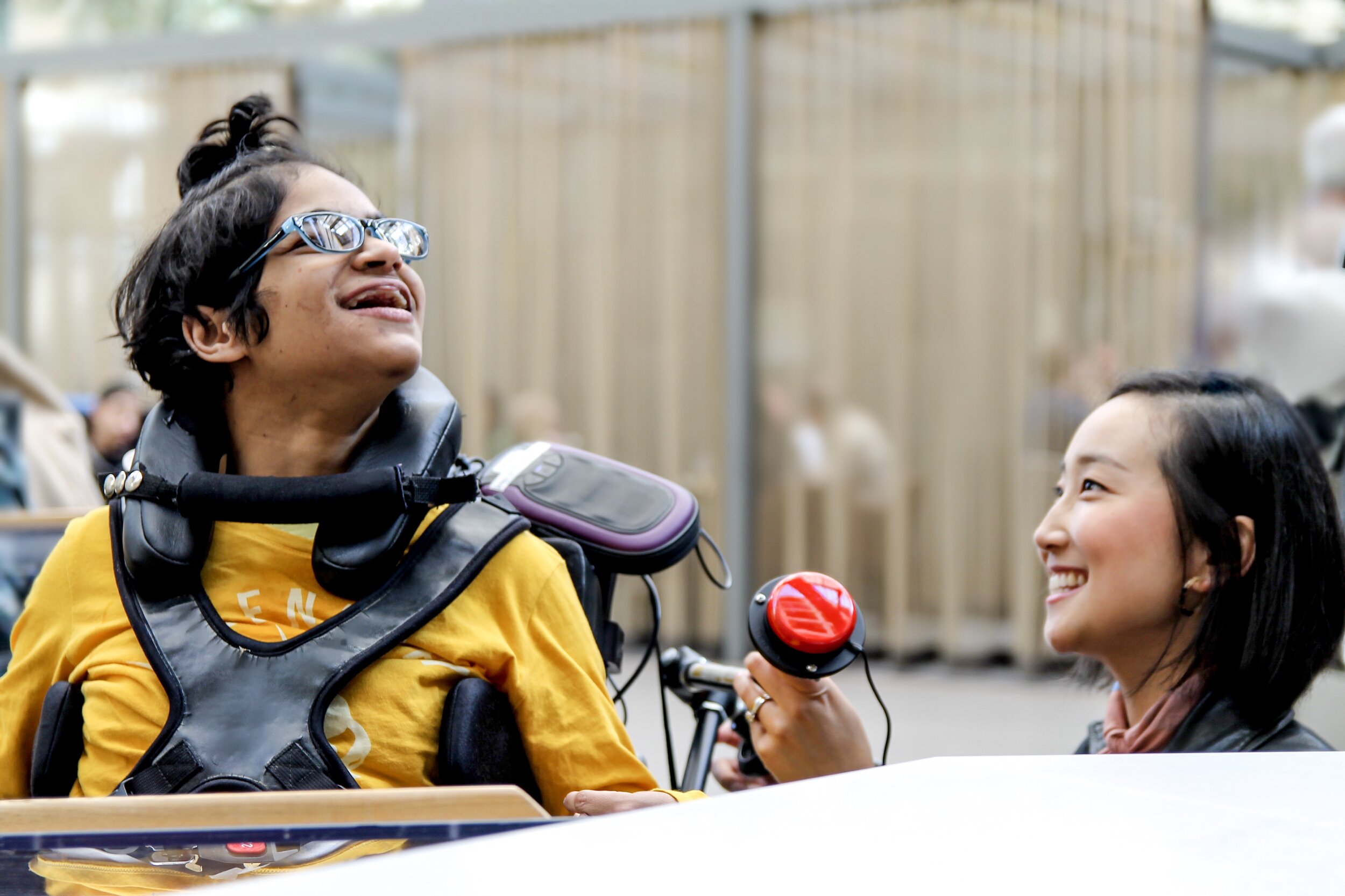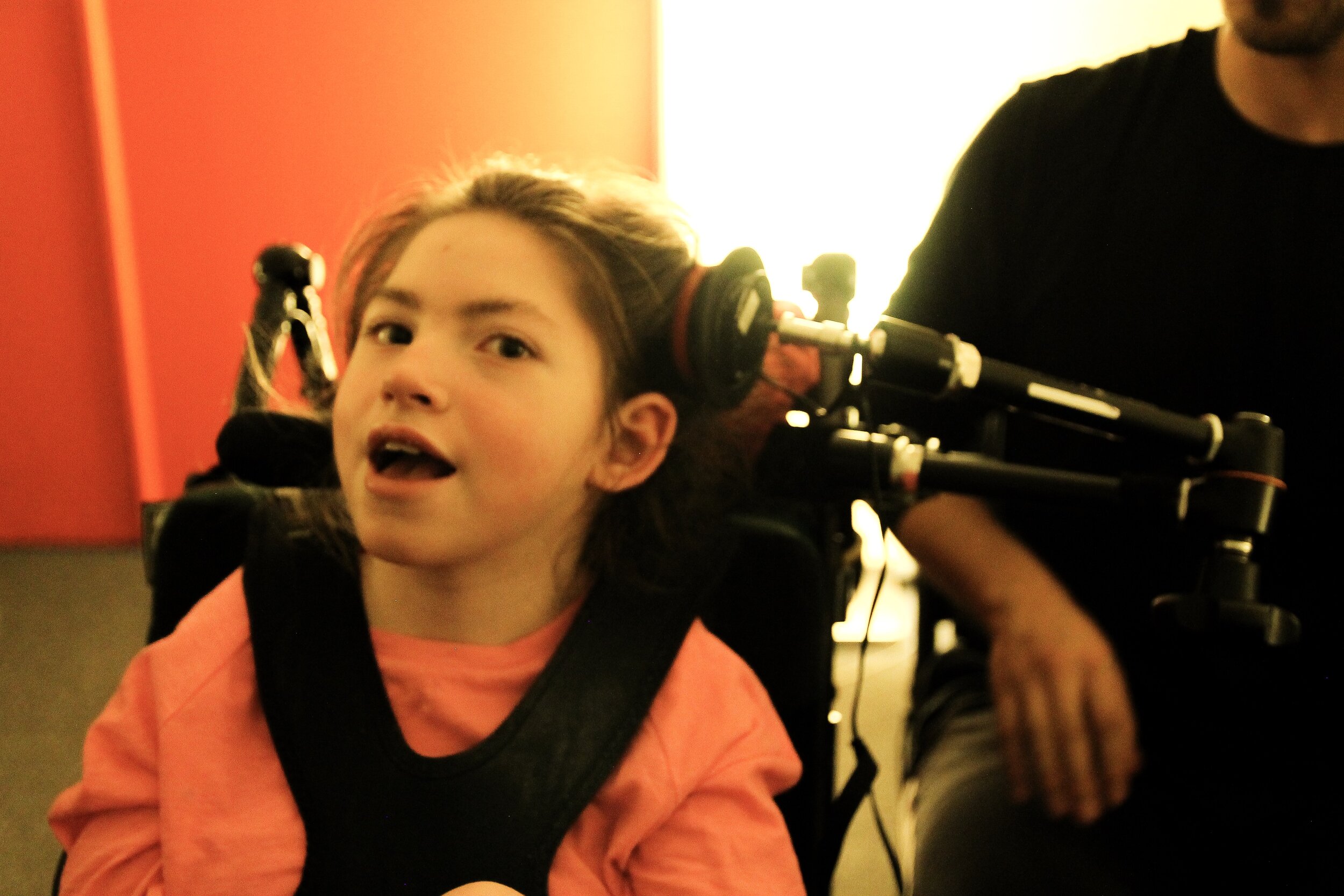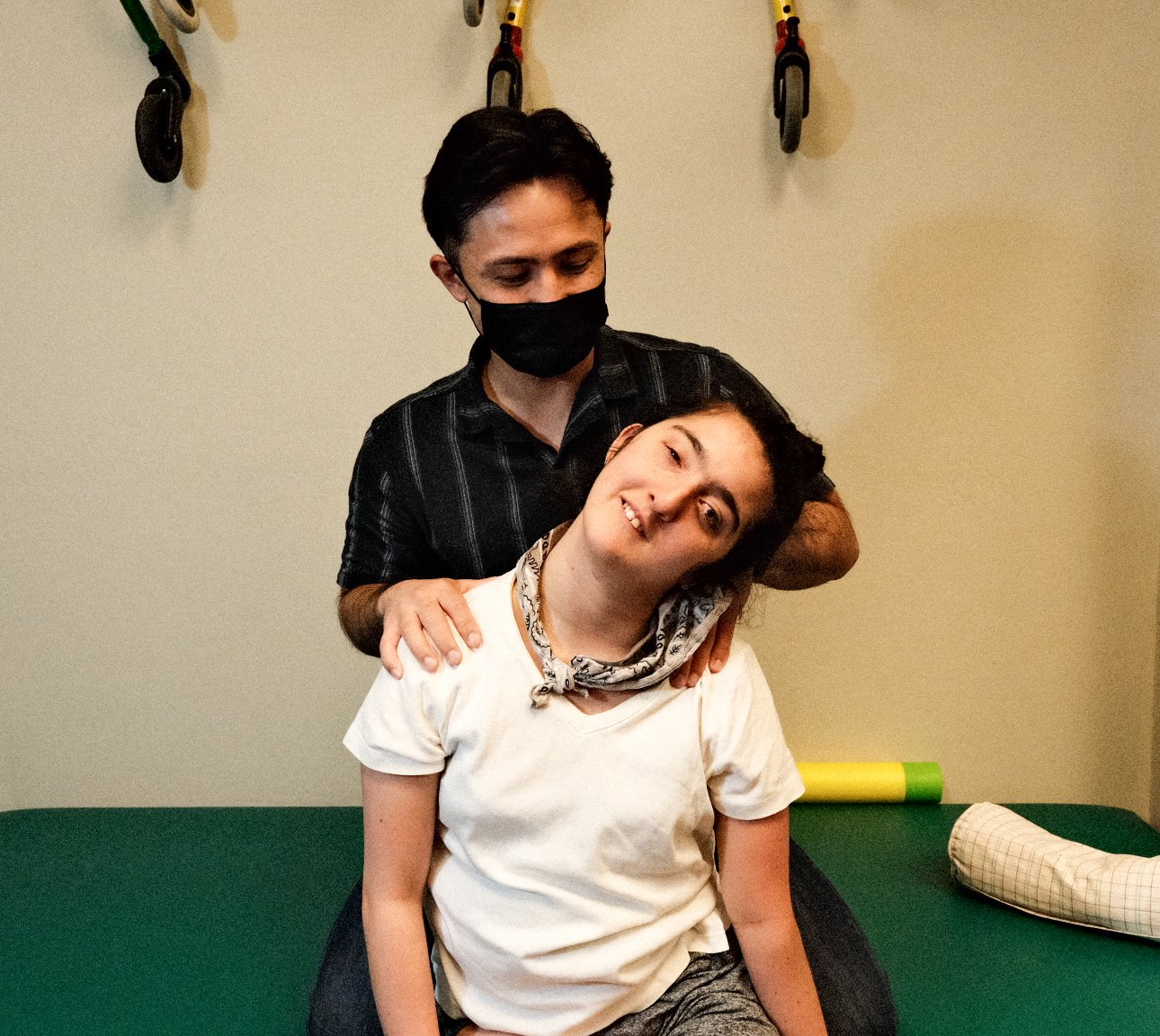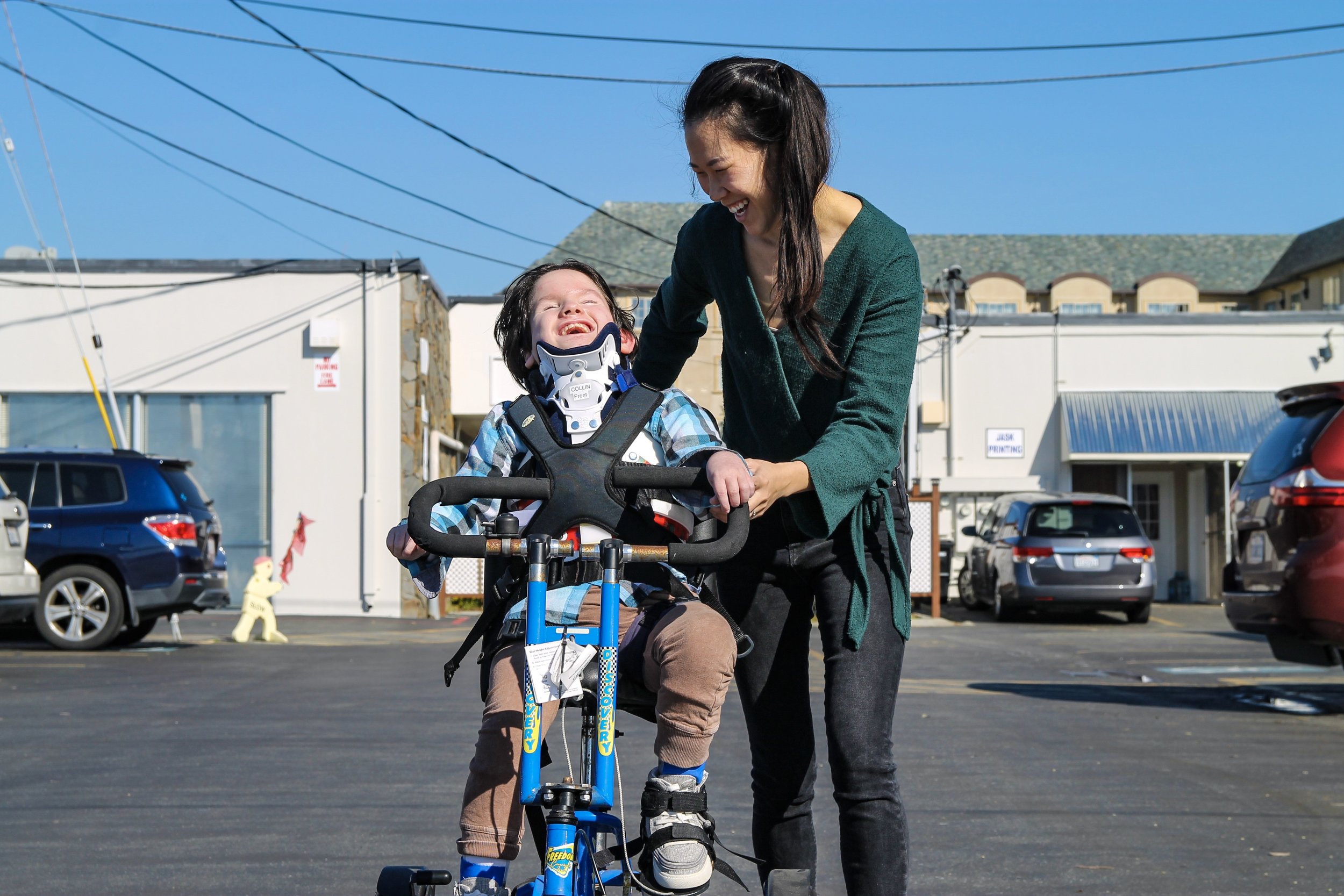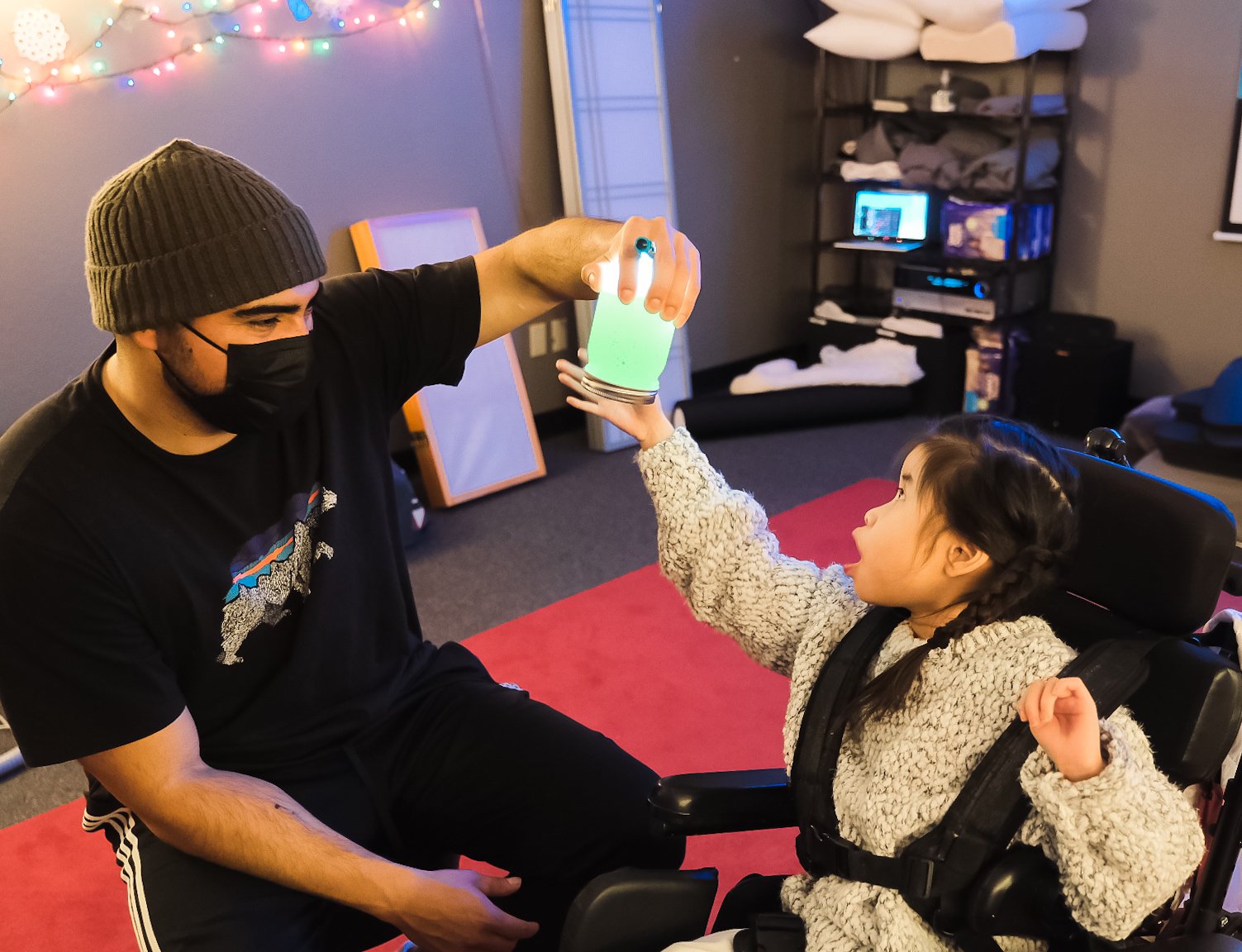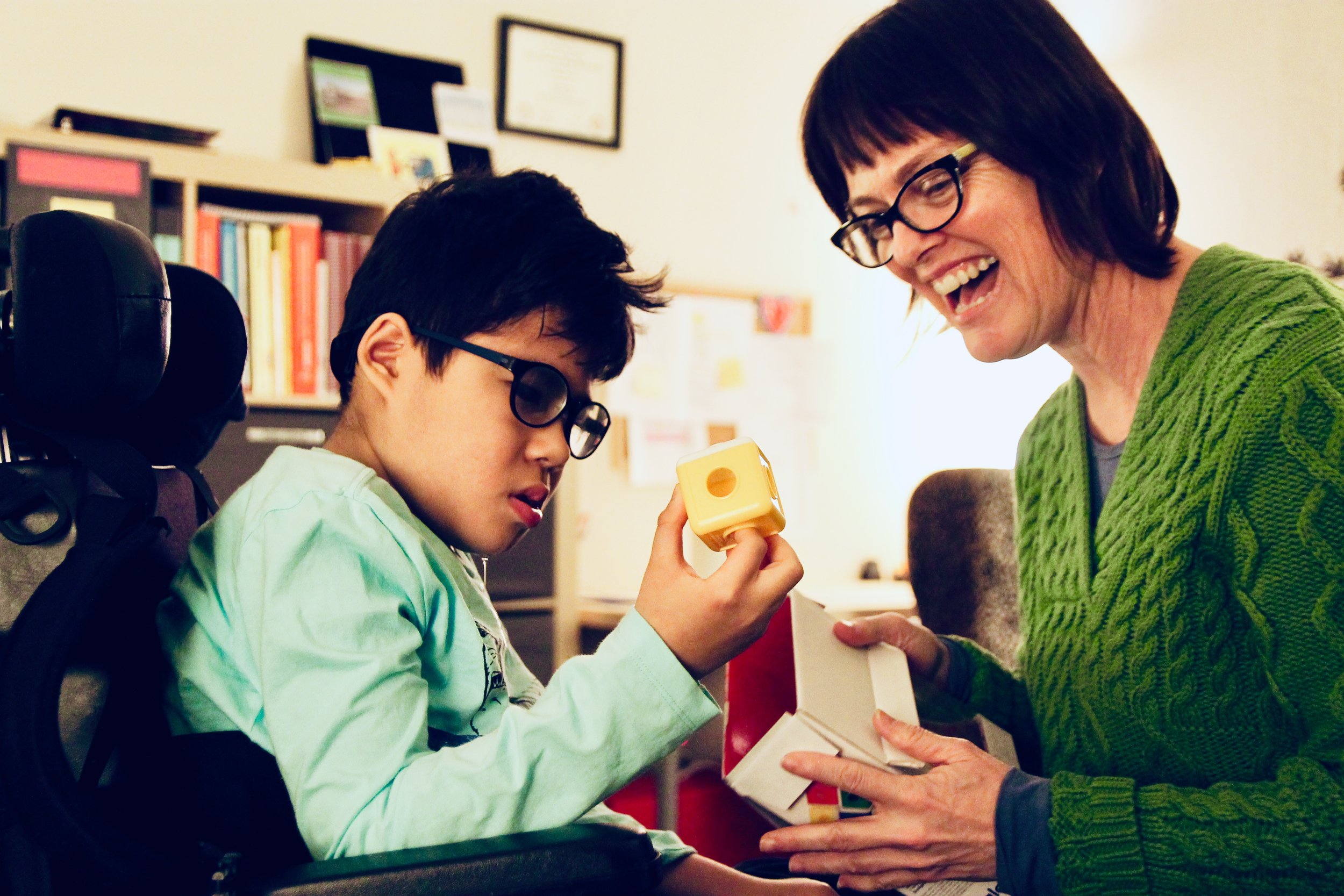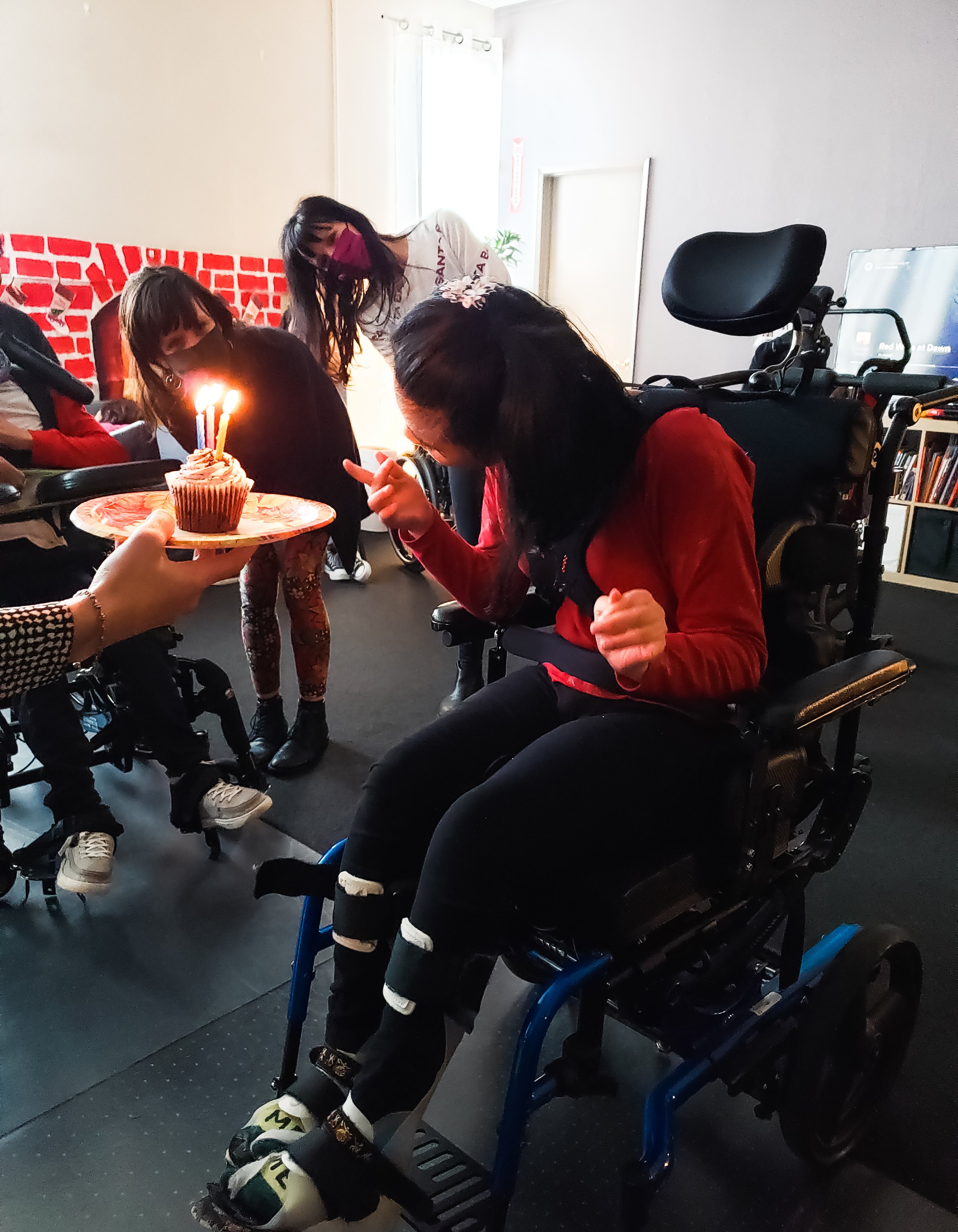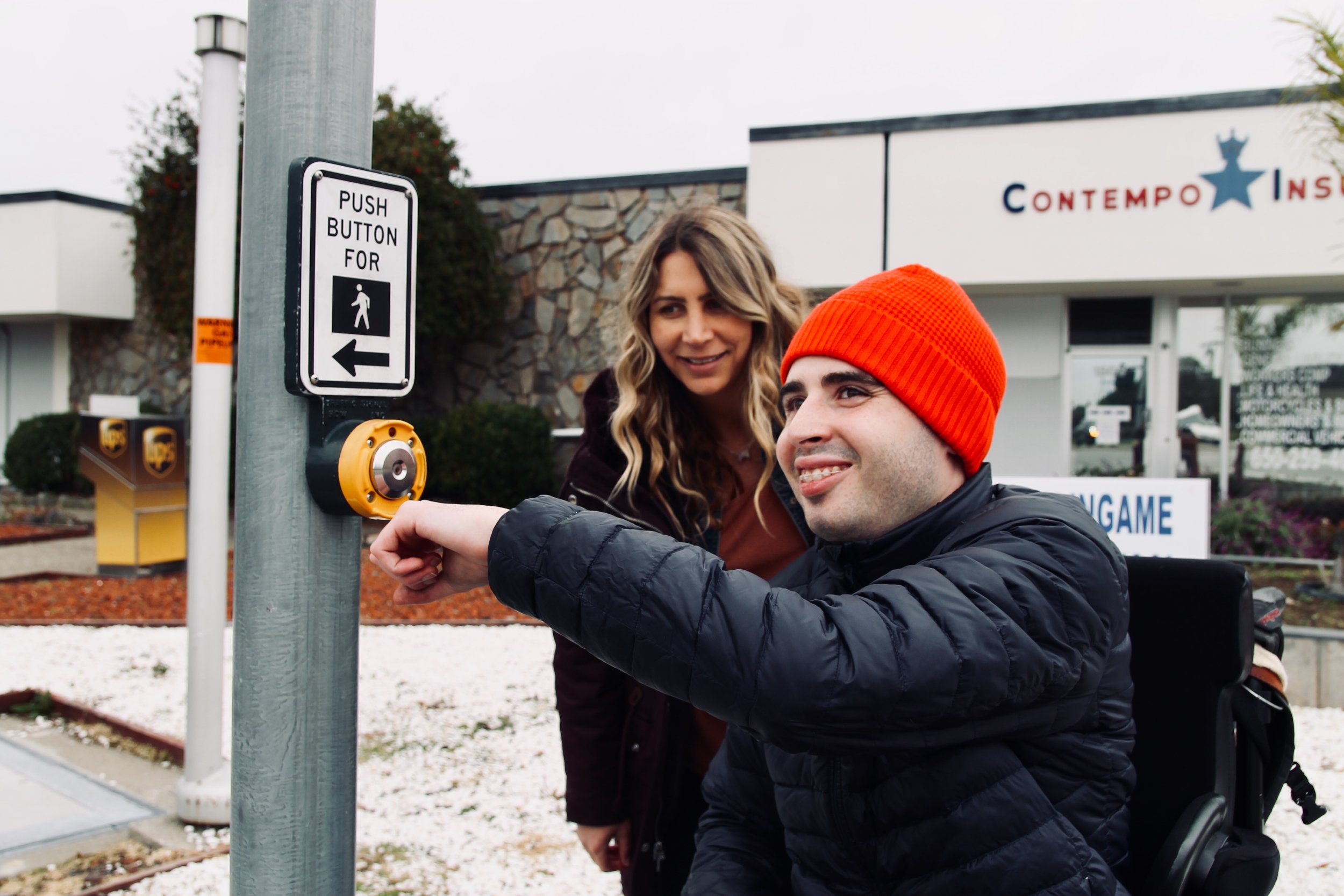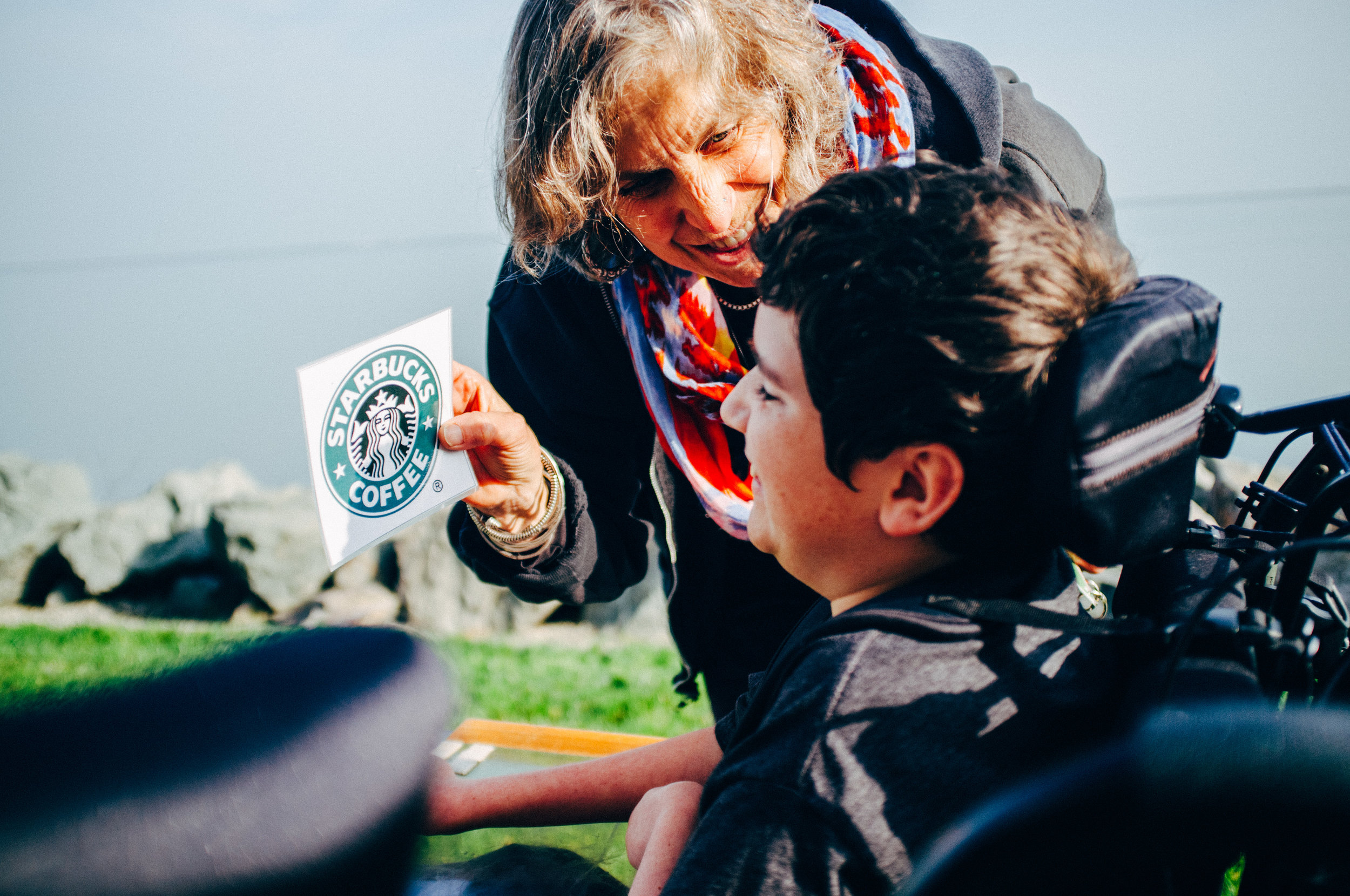Speech-Language & AAC
The speech-language and augmentative and alternative communication (AAC) department specializes in supporting the use of multimodal tools and strategies to enhance participation, learning, and communication. We collaborate heavily with families, caregivers, and members of the school team to create the most effective communication systems for each student.
Meaningful Choice-making
We want to empower our students with a means to express their wants, needs, and ideas by providing ample amounts of meaningful and motivating choice-making opportunities. We incorporate a multisensory approach, which involves pairing choices with a variety of sensory inputs, including auditory, visual, tactile, and olfactory.
Access
It is vital that each of our students have varied and ample opportunities to access communication tools and educational materials. We desire to see each student reach their full potential as active participants of our program by providing the appropriate alternative access tools. We capitalize on each AAC learner’s strengths and abilities to shape the motoric, cognitive, and communicative skills needed for intentional use of the equipment.
Social and Functional Communication
We facilitate social interactions between our students and their peers to foster meaningful relationships. Additionally, we support the use of communication systems across a variety of settings so that students can become important members of their community.
Individualized Assessments
Our AAC specialists conduct comprehensive AAC assessments and Speech Generating Device (SGD) evaluations that reflect the skills and needs of the whole individual. We look at current communication and language skills as well as communication needs that can be addressed with an alternative system. Our recommendations (e.g., for equipment, services, goals, etc.) are highly individualized to fit what is most appropriate for each student.
Designing Customized AAC Systems
We desire to provide our AAC users with access to vocabulary that is meaningful, colorful, and powerful. We design highly customized AAC systems and thoughtfully organize the messages to promote efficient use. We encourage the use of both unaided and aided communication modes to most effectively express their thoughts.
Physical Therapy
The physical therapy (PT) department at The Avalon Academy supports our student’s participation and access in the educational setting. We evaluate and treat focusing on the musculoskeletal, neuromotor, and somatosensory system to improve skilled motor control and movement function.
During our individualized therapy sessions, we use a variety of techniques including:
· Neuro-developmental treatment (NDT/Bobath)
· Reflex integration (MNRI)
· Soft tissue/Myofascial release
· Proprioceptive Neuromuscular Facilitation (PNF)
· Anat Baniel Method (ABM)
· Manual therapy
· Therapeutic exercise
· Neuromuscular electrical stimulation
(NMES)
In addition to direct therapy, our physical therapists consult within the classrooms to ensure students are participating and accessing their education with the least restriction.
Because movement matters at Avalon, we take care to optimize student participation not just in the classroom, but throughout the school day. We integrate various opportunities to move using specialized adapted equipment with skilled supervision by our trained staff throughout the day.
We take a conscious effort to think about our student’s continuum of care as they move through our elementary, middle, and high school program by anticipating future needs so that our students continue to physically participate with autonomy and maintain a high quality of life. We evaluate and recommend student use of equipment such as adapted seating, gait trainers/walkers, standers, adapted tricycles, orthotics, bracing and splinting.
The PT department has also designed and facilitated class field trips for aquatic therapy. We continue to strive for unique and motivating opportunities to facilitate movement exploration and skill acquisition at Avalon.
Vision
Studies show that 70% of what a child learns is from visually observing what is happening in their surroundings*. But if a child has a vision impairment, that “incidental learning” is diminished. The vision department works to fill in those visual gaps in a child’s knowledge so they can thrive and learn. Through hands on experiences and direct instruction of concepts, children at the Avalon Academy have the opportunity to explore their world in meaningful ways that directly impacts their comprehension in the classroom.
Beyond direct instruction of students, The Vision Department works with staff and teachers to maximize a student’s functional vision. Vision Specialists also adapt materials and consult with other specialists to increase the overall effectiveness of teaching strategies.
Instruction in the Expanded Core Curriculum is an important element of the Vision Department’s educational goals. The Expanded Core Curriculum (ECC) is the body of knowledge and skills that are needed by students with visual impairments due to their unique disability-specific needs. Students with visual impairments need the expanded core curriculum in addition to the core academic curriculum of general education. These knowledge based skills include:
Assistive Technology
Career Education
Compensatory Skills
Independent Living Skills
Orientation and Mobility
Recreation and Leisure
Self-Determination
Sensory Efficiency
Social Interaction Skills
The Avalon Academy provides the full implementation of the Expanded Core Curriculum in all classes, not just in those specific to Visual Support.
* Hatlen, P. H., & Curry, S. A. (1987). In support of specialized programs for blind and visually impaired children: The impact of vision loss on learning. Journal of Visual Impairment & Blindness, 81(1), 7-13.
Orientation & Mobility
Teaches systematic techniques to students who are visually impaired or blind to enable them to better orient themselves to their environments and empower them to move about more independently. This area of the expanded core curriculum (ECC) focuses on two broad interrelated components: orientation (knowing one’s position in relation to their environment and keeping track of their relation/position while moving through the environment) and mobility (movement from one place to another). Services are provided by O&M instructors (O&Ms) who are trained to work with students with visual impairments, including those with additional coexisting disabilities.


